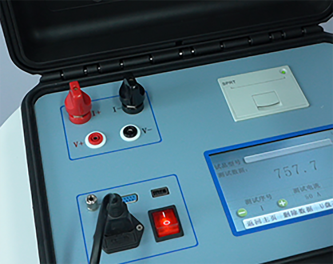 English
English



-
 Afrikaans
Afrikaans -
 Albanian
Albanian -
 Amharic
Amharic -
 Arabic
Arabic -
 Armenian
Armenian -
 Azerbaijani
Azerbaijani -
 Basque
Basque -
 Belarusian
Belarusian -
 Bengali
Bengali -
 Bosnian
Bosnian -
 Bulgarian
Bulgarian -
 Catalan
Catalan -
 Cebuano
Cebuano -
 China
China -
 China (Taiwan)
China (Taiwan) -
 Corsican
Corsican -
 Croatian
Croatian -
 Czech
Czech -
 Danish
Danish -
 Dutch
Dutch -
 English
English -
 Esperanto
Esperanto -
 Estonian
Estonian -
 Finnish
Finnish -
 French
French -
 Frisian
Frisian -
 Galician
Galician -
 Georgian
Georgian -
 German
German -
 Greek
Greek -
 Gujarati
Gujarati -
 Haitian Creole
Haitian Creole -
 hausa
hausa -
 hawaiian
hawaiian -
 Hebrew
Hebrew -
 Hindi
Hindi -
 Miao
Miao -
 Hungarian
Hungarian -
 Icelandic
Icelandic -
 igbo
igbo -
 Indonesian
Indonesian -
 irish
irish -
 Italian
Italian -
 Japanese
Japanese -
 Javanese
Javanese -
 Kannada
Kannada -
 kazakh
kazakh -
 Khmer
Khmer -
 Rwandese
Rwandese -
 Korean
Korean -
 Kurdish
Kurdish -
 Kyrgyz
Kyrgyz -
 Lao
Lao -
 Latin
Latin -
 Latvian
Latvian -
 Lithuanian
Lithuanian -
 Luxembourgish
Luxembourgish -
 Macedonian
Macedonian -
 Malgashi
Malgashi -
 Malay
Malay -
 Malayalam
Malayalam -
 Maltese
Maltese -
 Maori
Maori -
 Marathi
Marathi -
 Mongolian
Mongolian -
 Myanmar
Myanmar -
 Nepali
Nepali -
 Norwegian
Norwegian -
 Norwegian
Norwegian -
 Occitan
Occitan -
 Pashto
Pashto -
 Persian
Persian -
 Polish
Polish -
 Portuguese
Portuguese -
 Punjabi
Punjabi -
 Romanian
Romanian -
 Russian
Russian -
 Samoan
Samoan -
 Scottish Gaelic
Scottish Gaelic -
 Serbian
Serbian -
 Sesotho
Sesotho -
 Shona
Shona -
 Sindhi
Sindhi -
 Sinhala
Sinhala -
 Slovak
Slovak -
 Slovenian
Slovenian -
 Somali
Somali -
 Spanish
Spanish -
 Sundanese
Sundanese -
 Swahili
Swahili -
 Swedish
Swedish -
 Tagalog
Tagalog -
 Tajik
Tajik -
 Tamil
Tamil -
 Tatar
Tatar -
 Telugu
Telugu -
 Thai
Thai -
 Turkish
Turkish -
 Turkmen
Turkmen -
 Ukrainian
Ukrainian -
 Urdu
Urdu -
 Uighur
Uighur -
 Uzbek
Uzbek -
 Vietnamese
Vietnamese -
 Welsh
Welsh -
 Bantu
Bantu -
 Yiddish
Yiddish -
 Yoruba
Yoruba -
 Zulu
Zulu
lightning impulse test of transformer
Lightning Impulse Test of Transformers Importance and Methodology
The lightning impulse test is a critical procedure in assessing the insulation strength and general reliability of transformers. This test simulates the effects of lightning strikes and surges in electrical networks, which can potentially damage electrical equipment and compromise system integrity. Understanding the importance and methodology of the lightning impulse test is essential for ensuring the longevity and safety of transformers in various applications.
Importance of the Lightning Impulse Test
Transformers are crucial components in electrical power systems, responsible for voltage conversion and safe power transmission. Due to their operating conditions, transformers are exposed to various electrical stresses, including lightning strikes and electrical surges. When a lightning bolt strikes, it can create a high-voltage surge that, if not adequately mitigated, can lead to insulation breakdown within transformers, resulting in significant financial losses due to equipment failure and unplanned outages.
Conducting a lightning impulse test helps evaluate the transformer’s ability to withstand these high-voltage surges. By simulating a lightning strike, this test allows engineers to identify weak spots in the insulation system before transformers are placed into service. Ensuring the insulation characteristics of transformers can not only extend their operational lifespan but also enhances the reliability of the entire electrical distribution system, preventing catastrophic failures that could affect thousands of consumers.
Methodology of the Lightning Impulse Test
The process of conducting a lightning impulse test involves several carefully planned steps to ensure the test’s reliability and accuracy
. Here's an overview of the methodologylightning impulse test of transformer

1. Preparation The transformer under test must be adequately prepared, ensuring that it is free from any faults or defects. All connections are checked, and the setup is inspected to guarantee that it can handle the expected high-voltage discharge.
2. Equipment Setup The test setup typically includes a high-voltage impulse generator, a coupling capacitor, and measuring tools. The impulse generator is calibrated to produce a standard lightning impulse, usually characterized by a rise time of 1.2 microseconds and a duration of 50 microseconds.
3. Impulse Application Once the setup is confirmed, the impulse is fed into the transformer’s windings. The standard practice involves applying multiple impulses, often five, with varying polarities to assess the insulation’s response under different conditions.
4. Data Collection During the test, voltage and current measurements are recorded. These measurements are crucial for evaluating how well the transformer withstands the high-voltage impulses. Engineers look for any signs of insulation failure or breakdown, which might be evidenced by sparks, arcing, or sudden spikes in current.
5. Analysis and Reporting After the impulses are applied, detailed analysis is performed on the collected data. Engineers will assess the results against established criteria to determine whether the transformer meets the required standards. Any abnormalities will prompt further investigation and potential remediation measures.
Conclusion
The lightning impulse test is an indispensable part of ensuring that transformers can withstand the rigors of operational stresses, particularly those caused by electrical surges and lightning strikes. With the increasing frequency of extreme weather events due to climate change, the integrity of transformers in electrical networks becomes even more critical. The insights gained from these tests not only bolster the resilience of transformers but also contribute to the overall stability and reliability of electrical power systems. Continuous investment in testing methodologies and equipment enhancements is essential for maintaining the safety and functionality of modern electrical infrastructures.
-
Testing Equipment Industry Sees Major Advancements in 2025: Smart & Precision Technologies Lead the WayNewsJun.06,2025
-
Applications of Direct Current Generators in Renewable Energy SystemsNewsJun.05,2025
-
Hipot Tester Calibration and Accuracy GuidelinesNewsJun.05,2025
-
Digital Circuit Breaker Analyzer Features and BenefitsNewsJun.05,2025
-
Benefits of Real-Time Power Quality Monitoring Devices for Industrial EfficiencyNewsJun.05,2025
-
Earth Fault Loop Testing in High-Rise Building Electrical SystemsNewsJun.05,2025



